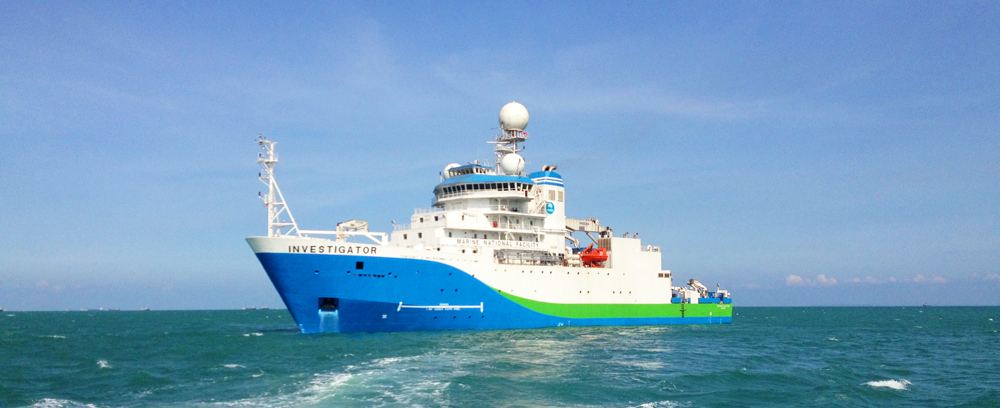Investigator looking fabulous during her sea trials.
Australia has one of the world’s largest marine territories, much of which remains unexplored, with only one blue-water research vessel available to our marine research community. Here’s five facts about the new Marine National Facility research vessel, Investigator.
- The ship was given the name Investigator after a national naming competition by 10-year-old student Clare Cameron and PhD student Kirrily Moore.
- Investigator will be capable of spending 300 days a year at sea, each voyage will be able to accommodate up to 40 scientists.
- The vessel is 93.9 metres, replacing the 66-metre vessel Southern Surveyor.
- Investigator will be capable of operating continuously for 60 days at sea, cruising at 12 knots over a range of 10 000 nautical miles in a single voyage.
The new vessel will operate from the tropical north to the Antarctic ice-edge and across the Indian, Southern, and Pacific oceans, greatly improving our capacity to investigate and understand marine geological processes, detect and predict changes in the ocean environment and their implications for weather and climate and characterise and manage marine ecosystems, biodiversity and fisheries.
Late last year Investigator was moved from the wharf at the Sembawang Shipyard, in Singapore, into the water. The skidding took several days, as the hydraulic system used to move the ship across the wharf only moves at a snail’s pace, taking minutes to move just millimetres.



18th October 2017 at 10:02 am
bu yah
12th May 2014 at 4:54 pm
Hi CSIRO, not sure the spec quoted is correct, its highly unlikely “The Investigator weighs 6,082 ton” wow this would be an engineering miracle!
26th May 2014 at 12:00 pm
Investigator is an engineering and design feat in so many ways. There isn’t another ship on earth quite like Australia’s new blue water research vessel!
When it comes to the gross tonnage of the ship, this figure is correct – 6,082 ton and the displacement tonnage is 5,880 tonnes!